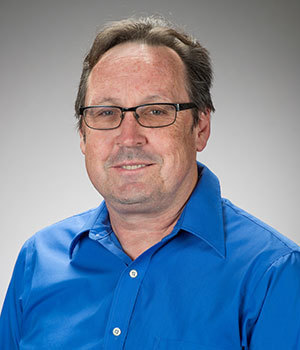Through coercion and deception, more than 20 million people around the world are forced into labor that generates more than $150 billion in annual profits, according to the International Labour Organization (ILO).
At an extreme, modern slavery and human trafficking involve exploitation that a person cannot refuse or escape because of threats, violence, coercion and deception. Despite the illegality, tens of millions of people are victimized by organized traffickers each year with estimates that one in four are children, according to the ILO.
A new study from the University of Notre Dame examines how human traffickers systematically target girls and women from impoverished villages in India and take them to big cities like Mumbai, where they transform objections into compliance. The study draws from interviews with girls and women forced into the sex industry, human traffickers, brothel managers, doctors, nongovernmental organizations (NGOs) and police officers, in an effort to better understand the cycle and ultimately invoke change.

“Organizing the Exploitation of Vulnerable People: A Qualitative Assessment of Human Trafficking” is published in the Journal of Management from Dean Shepherd, the Ray and Milann Siegfried Professor of Entrepreneurship in Notre Dame’s Mendoza College of Business, along with Vinit Parida and Joakim Wincent from the Luleå University of Technology in Sweden and Trent Williams from Indiana University.
Continuing a research theme of adversity in entrepreneurship, Shepherd looked to the red-light districts of the major cities in India and focused on women entering the sex industry. He quickly discovered that almost none of them had made a conscious decision to offer “service” – they were tricked and sold into the industry.
Shepherd said girls from very poor rural villages are lured into the major cities through deceptive recruiting practices, including bait and switch — “sometimes explicitly by family members, or the family turns a blind eye to the fact that it happened. A boy pledges love, promises marriage, they run away and she is sold. Or, the promise of a job in the city as a cleaner, but instead they get taken. And the girls can never go back home because they would never be accepted, even though the family members often caused or aided their victimization.”
The team interviewed two dozen current and former workers forced into the sex industry, including “Shrita” from Nashik in Western India. She told them she was befriended by a woman who took her from her village to Mumbai when she was around 15 years old, and promised to return her to her family. Instead, Shrita was sold to strangers and raped by five to seven “customers” per day for years.
“I used to cry a lot,” she said. “I used to say no. They all said no one will take you back. Your life will be a mess. They said where your village is, we will tell everyone you are like this and they will kill you. I even tried suicide. They saved me. I got stitches. I understood nothing can be done and I have no support.”
Now 42, Shrita managed to survive and escape.
Through interviews with Shrita and others like her, along with dozens of conversations with traffickers, recruiters, aid workers and others, the team uncovered a cycle of human exploitation that involved four interrelated practices – deceptive recruiting, entrapping through isolation, extinguishing alternatives by building barriers and ultimately converting the exploited into exploiters.
“They were broken away from their connections and isolated, and the stigma now associated with them — not through their own actions, but other people’s actions against them — meant that it was impossible to go back home,” Shepherd explained. “All former connections were broken off, leaving them entrapped with no options.”
The team found that brothel owners force the girls to repay the cost of their initial purchase along with other “debts” including accommodation. Police are often corrupt. They conduct raids, but are paid off by the brothel managers and the girls are returned. As the girls get older and begin to earn more responsibility and freedom, they repeat the cycle.
For Shepherd, that was the most shocking.
“They are beaten, they are drugged, they are raped, all of it just horrible,” he said. “But then they eventually recruit other girls. They become highly desensitized in the end and brainwashed as well.”
The team found an NGO working with a group of former sex workers who started a business making fabrics. The women couldn’t return to society, so they lived and worked together in a rare example of successful escape from the cycle.
Shepherd hopes this study can offer new insights into counter-organizing including NGO interventions like this one. He says it’s essential to understand a situation before it can be improved.
“If we can offer girls and women alternatives other than the sex industry after having been in the sex industry, then they won’t have to become recruiters,” he said, while acknowledging the enormity of institutional forces working against them.
“One way to help would be get rid of poverty in India and in other developing economies with high levels of poverty and corruption,” he said. “That’s no easy task. Eliminate the demand for the sex industry, police corruption and patriarchal societies. They’re all massive problems with no easy fixes. But that shouldn’t stop us from considering what we might be able to do.”
Specializing in entrepreneurship under adversity, Shepherd was recognized in 2017 as the world’s leading scholar in entrepreneurial research. Much of his research has confirmed the adage that “necessity is the mother of innovation.” After devastating trauma such as being sold into sexual slavery, many people find entrepreneurship can provide the only choice to survive.
Contact: Dean Shepherd, 574-631-0801 or dshephe1@nd.edu
